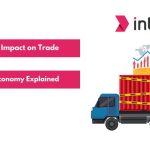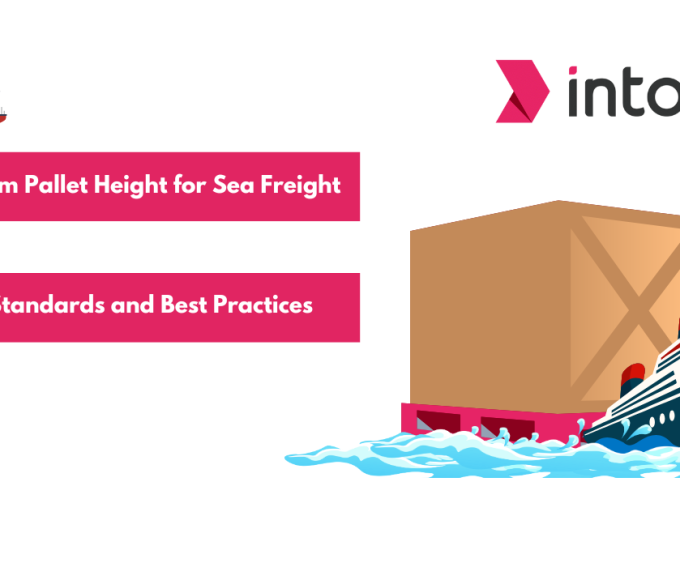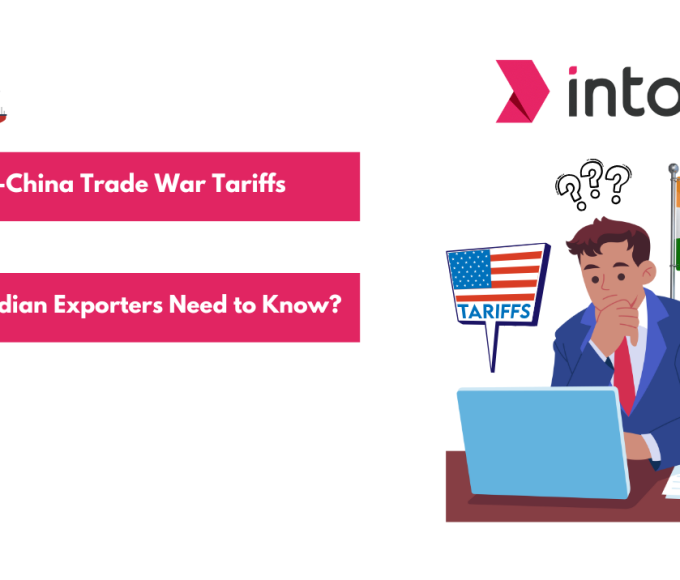Have you ever wondered how a perfectly planned export shipment can suddenly become a financial headache? Well, picture this—you’ve secured a major order from a U.S. buyer, your goods are packed and ready to ship, but upon arrival, your shipment is hit with a steep import duty, one you didn’t see coming. What went wrong? More often than not, the Tariff Rate Quota caught exporters off guard.
A TRQ offers greater market access than a strict quota by allowing imports beyond the set limit, though at a higher tariff. In reality, however, many over-quota tariffs are so steep that they act as a barrier, effectively shutting out any additional imports. With the right design, a Tariff Rate Quota can mirror the restrictive impact of the quota it replaces, limiting trade volume just as effectively.
According to the U.S. Trade Representative, in 2024, U.S. goods imports from India totaled $87.4 billion, up 4.5% from 2023 . This substantial trade volume underscores the importance for Indian exporters to be well-versed in TRQ regulations to maintain competitiveness in the U.S. market.
In this blog, we’ll break down everything you need to know about Tariff Rate Quotas—how they work, their impact on your shipments, and practical tips to navigate them effectively, so you can avoid unexpected costs and maximize your export opportunities.
What is a Tariff Rate Quota?
A Tariff Rate Quota (TRQ) is a trade policy tool used by governments to regulate the quantity of specific products that can be imported at a lower tariff rate. Once the quota is met, additional imports are subject to a higher tariff rate. Essentially, TRQs combine two different tariff rates: a lower rate for imports within a set quota limit and a higher rate once that limit is exceeded. To better understand how TRQs function and their impact on trade, let’s explore their key features.
Key Features
- No Absolute Limit: There is no cap on the total quantity that can be imported; only the tariff changes after the quota is filled.
- Government Revenue: TRQs generate revenue from tariffs, especially on imports above the quota.
- WTO Compliance: TRQs are generally accepted under World Trade Organization (WTO) rules, unlike absolute quotas, which are more restricted.
- Administration: TRQs require clear administration to allocate the in-quota rights and ensure non-discrimination among importers and exporting countries.
Example
Suppose a country sets a TRQ for cheese:
Up to 5,000 tons: 10% tariff (in-quota rate)
Above 5,000 tons: 35% tariff (out-of-quota rate)
Importers can bring in as much cheese as they want, but after 5,000 tons, the cost to import rises sharply due to the higher tariff. With this example in mind, let’s take a closer look at how tariff rate quotas work in practice.
How Do Tariff Rate Quotas Work?
Tariff Rate Quotas work by allowing a specified quantity of imports at a lower tariff rate, while applying higher tariffs to any excess imports. TRQs typically operate in three main stages:
- Quota Allocation: A country allows a specific quantity of a product to be imported at a reduced tariff rate.
- Post-Quota Tariff Increase: Any imports beyond this set limit face significantly higher tariffs instead of being completely banned.
- Market Regulation: This system manages import volumes while protecting domestic producers from overwhelming foreign competition.
This system aims to balance trade by allowing specific products to enter the market at a reasonable cost while protecting domestic producers from being overwhelmed by foreign competition.
Also read: Why is Last Mile Delivery Expensive: High Costs and Solutions
Understanding how TRQs work is important, but equally crucial is the role of HS Codes in managing quotas and tariffs.
The Role of HS Codes in Quotas and TRQs
Harmonized System (HS) codes are essential tools for governments and customs authorities to classify goods and manage trade quotas. These codes indicate whether a product is subject to an import quota or a Tariff Rate Quota, helping businesses determine if their goods qualify for lower tariffs or risk higher duties once thresholds are crossed.
Not all goods fall under quotas or TRQs—these restrictions typically apply to specific categories like agriculture, steel, or textiles. Customs officials rely on HS codes to monitor import volumes, enforce restrictions, and apply appropriate tariffs. An incorrect classification can lead to penalties or unexpected charges, making accurate HS coding critical for smooth international trade.
Now that we’ve seen how HS codes play a vital role in managing quotas and TRQs, let’s compare Tariff Rate Quotas with traditional quotas and tariffs to understand their differences.
Unsure about HS codes or TRQ eligibility? Intoglo’s HS Code Scanner and Lookup Tool make it easy to find the right codes fast, ensuring smooth customs clearance. Try them now!
TRQs Versus Quotas and Tariffs
It’s essential to understand the difference between TRQs, tariffs, and import quotas to effectively navigate global trade.
- Tariffs
A tariff is a tax or duty imposed on imported goods, designed to make foreign products more expensive and protect domestic industries. Unlike TRQs, tariffs apply to all imports of a specific product, regardless of quantity.
- Import Quotas
An import quota limits the total quantity or value of a specific product that can be imported into a country. The main difference between a tariff rate quota and a traditional quota is that TRQs allow a portion of imports to enter at a lower tariff rate, while quotas typically impose the same tariff on all imports once the limit is reached.
- Tariff Rate Quotas
TRQs, as discussed, allow imports within a set quota to be taxed at a lower rate, but once the quota is filled, higher tariffs apply to the remaining goods. This system is often used for sensitive products like agricultural goods, where governments want to encourage imports but also protect domestic industries.
Also read: Guide to Exporting Food Products from India to USA
Understanding these distinctions helps us see how TRQs uniquely balance trade interests. So, let’s explore how Tariff Rate Quotas impact global trade.
How TRQs Impact Global Trade?
Tariff Rate Quotas play a significant role in shaping global trade, and understanding their implications is vital for businesses engaged in international shipping. Here’s how TRQs impact the global market.
- Trade Balance and Protectionism: TRQs help governments protect domestic industries from being overwhelmed by cheap imports while still allowing for international trade. This balanced approach fosters healthier competition and protects local producers.
- Market Access: For exporters, TRQs represent a way to access foreign markets at competitive rates. However, they also need to be aware of quota limits and plan shipments accordingly. Exceeding the quota means paying higher tariffs, which can significantly increase costs.
- Predictability and Planning: With TRQs, businesses can plan their shipments knowing the limits and associated costs. Understanding when a quota is nearing its limit allows exporters to adjust their strategies and avoid higher tariff rates.
- Logistics and Compliance: Tariff Rate Quotas complicate international shipping, requiring importers to track quotas and time shipments carefully to avoid higher tariffs. Accurate documentation and compliance are essential to prevent costly penalties.
- Transparency and Administration Challenges: The effectiveness of TRQs in promoting market access is sometimes questioned. Issues with transparency, administration, and quota allocation can lead to underutilization (low fill rates) or disputes within the WTO framework. About 40% of TRQs are fully or nearly filled, while 36% have very low fill rates, often due to unclear rules or administrative hurdles.
To better understand how these dynamics play out in real-world trade, let’s look at some concrete examples of Tariff Rate Quotas in action.
TRQs in Global Trade: Key Case Studies
The following examples illustrate how countries apply TRQs to manage trade while supporting local industries.
Example 1: U.S. Beef TRQ for Japan and Australia
The U.S. has established TRQs for beef exports to countries like Japan and Australia. For example, under the U.S.-Japan Trade Agreement, a designated volume of U.S. beef can enter Japan at a preferential tariff rate. Once this limit is reached, higher tariffs kick in on additional imports, safeguarding Japan’s local beef industry while allowing a regulated amount of foreign beef.
Example 2: China’s Wheat TRQ
China applies a Tariff Rate Quota on wheat, allowing a set amount to be imported at a reduced tariff. Imports exceeding this quota are subject to much higher tariffs, striking a balance between protecting domestic wheat farmers and enabling a controlled flow of foreign wheat into the market.
Example 3: U.S. Steel TRQ
The U.S. also implements TRQs on certain steel products. While a specified amount of steel can be imported at a lower tariff, any additional imports above the quota limit face higher tariffs. This mechanism helps protect U.S. steel manufacturers from an influx of cheaper foreign products, while still ensuring sufficient access to international steel markets.
Understanding these real-world examples reveals the practical challenges and strategies involved in managing TRQs. Now, let’s explore how you can navigate Tariff Rate Quotas effectively to optimize your international shipments.
Key Strategies to Manage TRQs Effectively
To navigate TRQs effectively, businesses need to be proactive and plan their shipments carefully. Here are some tips to help you optimize your approach.
1. Monitor Quota Usage: Regularly track quota fill rates via Customs and Border Protection (CBP) reports and use software tools for real-time monitoring to plan shipments and avoid excess tariffs. These reports provide updated fill rates, helping to plan shipments and avoid exceeding preferential rate limits.
2. Stay Agile to Market Changes: Since TRQs are subject to fluctuating market demands, importers must remain flexible, adjusting import strategies based on current market conditions and quota availability. This may involve diversifying supply sources or modifying product offerings to better align with quota periods and market needs.
3. Use Expert Support: Engaging with licensed customs brokers or consulting services can provide valuable insights into the complexities of TRQs, helping importers understand regulatory nuances and optimize quota utilization.
4. Understand the Regulatory Framework: TRQs limit the quantity of goods allowed at a lower tariff rate, after which higher tariffs apply. Knowing the specific quotas and tariff rates for products is essential for planning imports and managing costs effectively.
5. Build Tariff Resilience: Integrate tariff modeling into business planning using AI and analytics to optimize sourcing and protect margins.
6. Form Cross-Functional Teams: Create dedicated teams and a central planning hub to coordinate TRQ compliance, supplier relations, and fast decision-making.
By integrating real-time monitoring, adaptable operations, expert support, and data-driven planning, companies can manage TRQs efficiently, reducing tariff costs and strengthening supply chain resilience.
Conclusion
Understanding tariff rate quotas is essential for businesses involved in international trade, especially when exporting goods like food products, steel, or dairy to markets like the U.S. and the EU. TRQs allow exporters to take advantage of lower tariffs within the quota limits, but exceeding those limits can result in significantly higher costs. That’s why staying informed is key.
To simplify this complexity, Intoglo offers tech-driven solutions that streamline customs compliance, ensure accurate documentation, and help you stay ahead of shifting trade regulations. With automated workflows and real-time insights, you can avoid delays, reduce costs, and focus on growing your global business.
Whether you’re a first-time exporter or a seasoned pro, Intoglo delivers a seamless, tech-driven shipping experience.
- Transparent pricing with no hidden fees
- Reliable door-to-door FCL shipping.
Request a free quote for your next shipment and experience transparent, reliable service with Intoglo. Our tech-driven solutions keep you informed about quota limits and help you avoid costly tariffs, so your shipments always stay on track.









Leave a comment